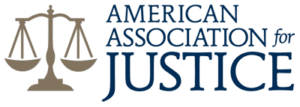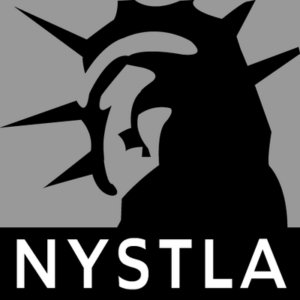Intersections are among the most hazardous locations for motorcyclists. The convergence of various traffic flows, the presence of multiple lanes, and the frequent need for vehicles to stop, yield, or change direction all contribute to a complex and often dangerous environment. For motorcyclists, these risks are heightened due to their smaller size, less visible presence, and the inherent vulnerability that comes with riding a two-wheeled vehicle. Understanding the specific dangers posed by intersections and implementing strategies to mitigate these risks is crucial for enhancing motorcycle safety and reducing the incidence of accidents.
The Unique Challenges of Intersections
Intersections present a unique set of challenges for all road users, but motorcyclists face particular difficulties. One of the primary issues is visibility. Motorcycles are smaller and can easily be obscured by larger vehicles or roadside objects, making them less likely to be seen by other drivers. This lack of visibility is a significant factor in many intersection-related accidents, as drivers may fail to notice an approaching motorcycle, leading to collisions.
Another challenge is the complexity of maneuvers required at intersections. Motorcyclists must navigate turns, merges, and lane changes while maintaining balance and control. These maneuvers can be difficult, especially when other drivers do not signal their intentions or follow traffic rules. The need for quick decision-making and precise control adds to the risk, particularly in busy or poorly designed intersections.
Intersections also tend to have more frequent and abrupt stops, starts, and changes in traffic flow. This variability can be problematic for motorcyclists, who must be able to react swiftly to changing conditions. Sudden stops by other vehicles can lead to rear-end collisions, while abrupt lane changes can result in side-swipe accidents. The unpredictability of traffic at intersections requires heightened awareness and quick reflexes from motorcyclists.
Common Causes of Intersection Accidents
Several common factors contribute to the high rate of motorcycle accidents at intersections. One of the most prevalent causes is driver inattention. Distracted driving, whether due to mobile phone use, in-car entertainment systems, or other distractions, can prevent drivers from noticing motorcycles. Even a momentary lapse in attention can have severe consequences in the complex environment of an intersection.
Another significant cause is the failure to yield the right of way. Many intersection accidents occur when drivers fail to yield to motorcyclists, either due to misjudging the motorcycle’s speed and distance or simply not seeing the motorcycle at all. This failure to yield often results in side-impact collisions, which can be particularly dangerous for motorcyclists due to the lack of protective barriers.
Improper turning is another frequent cause of intersection accidents. Left-turn collisions are especially common, occurring when a driver turns left across the path of an oncoming motorcycle. These accidents often happen because the driver did not see the motorcycle or misjudged its speed. Right-turn accidents can also occur when a driver turns right without checking for motorcycles approaching from behind or the side.
Inadequate signaling and lane changes are also significant contributors to intersection accidents. Drivers who fail to signal their intentions or change lanes abruptly can create hazardous situations for motorcyclists. These sudden changes can force motorcyclists to take evasive action, increasing the risk of losing control or colliding with another vehicle.
Strategies for Enhancing Motorcycle Safety at Intersections
Given the unique challenges and common causes of intersection accidents, it is essential for motorcyclists to adopt strategies that enhance their safety. One of the most effective strategies is increasing visibility. Motorcyclists can use bright or reflective clothing and accessories to make themselves more noticeable to other drivers. Additionally, using headlights during the day and installing auxiliary lights can further enhance visibility.
Another crucial strategy is practicing defensive riding. Motorcyclists should always assume that other drivers may not see them and should be prepared to take evasive action. This means maintaining a safe following distance, scanning the road ahead for potential hazards, and being ready to react to sudden changes in traffic conditions. Defensive riding also involves anticipating the actions of other drivers and being aware of blind spots where motorcycles may be less visible.
Proper lane positioning is also vital for intersection safety. Motorcyclists should position themselves in the lane where they are most visible to other drivers and where they have the best view of the road ahead. This may involve riding in the left or right tire track of the lane, depending on the specific intersection and traffic conditions. Proper lane positioning can help motorcyclists avoid being in a driver’s blind spot and improve their ability to react to potential hazards.
Communicating intentions is another important aspect of intersection safety. Motorcyclists should use hand signals and turn signals to indicate their intentions clearly to other drivers. Making eye contact with drivers when possible can also help ensure that they are aware of the motorcyclist’s presence and intended actions. Clear communication can reduce the likelihood of misunderstandings and collisions at intersections.
Regular maintenance of the motorcycle is also crucial for safety. Ensuring that the brakes, tires, lights, and other essential components are in good working order can help prevent accidents caused by mechanical failures. Motorcyclists should perform regular checks and address any issues promptly to maintain the reliability and safety of their vehicle.
Related Videos
How should I choose a motorcycle accident attorney for my claim?
Motorcycle tips and tricks
Legal Considerations and Liability in Intersection Accidents
In the unfortunate event of an accident at an intersection, legal considerations and issues of liability often come into play. Determining fault in these accidents can be complex, as multiple factors and actions by different parties may have contributed to the collision. Understanding the legal aspects of intersection accidents is important for motorcyclists seeking compensation for injuries and damages.
One key legal consideration is the duty of care that all drivers owe to each other. Drivers are expected to operate their vehicles in a manner that ensures the safety of other road users, including motorcyclists. When a driver breaches this duty of care, either through negligent or reckless behavior, they may be held liable for any resulting accidents and injuries.
In intersection accidents, establishing fault often involves examining whether the drivers involved adhered to traffic laws and signals. For example, if a driver ran a red light or failed to yield the right of way, they may be found at fault for the accident. Similarly, if a driver was distracted or impaired at the time of the collision, this could also establish liability.
Motorcyclists involved in intersection accidents should gather evidence to support their claims. This may include photographs of the accident scene, witness statements, and police reports. Additionally, seeking medical attention immediately after the accident is important not only for health reasons but also to document the extent of injuries sustained. Medical records can serve as crucial evidence in establishing the impact of the accident on the motorcyclist’s health and well-being.
The Role of Legal Representation
Navigating the legal aftermath of an intersection accident can be challenging, particularly for injured motorcyclists who may be dealing with medical treatment and recovery. Seeking legal representation can help ensure that motorcyclists’ rights are protected and that they receive fair compensation for their injuries and damages.
A skilled attorney can assist in investigating the accident, gathering evidence, and building a strong case. They can negotiate with insurance companies on behalf of the motorcyclist and advocate for a fair settlement. If necessary, an attorney can also represent the motorcyclist in court to pursue compensation through litigation.
Legal representation is especially important in cases where liability is disputed or where the motorcyclist’s injuries are severe. An attorney can help navigate the complexities of the legal system and ensure that the motorcyclist’s interests are prioritized throughout the process.
Promoting Awareness and Education
In addition to individual strategies for enhancing safety, broader efforts to promote awareness and education about motorcycle safety at intersections are essential. Public awareness campaigns can highlight the unique risks that motorcyclists face and encourage drivers to be more vigilant and attentive at intersections. These campaigns can also educate motorcyclists about best practices for intersection safety and the importance of defensive riding.
Education and training programs for motorcyclists can also play a significant role in improving safety. Motorcycle safety courses can provide valuable instruction on defensive riding techniques, proper lane positioning, and effective communication with other drivers. These courses can help motorcyclists develop the skills and knowledge needed to navigate intersections safely.
Collaboration between government agencies, law enforcement, and motorcycle advocacy groups can also contribute to intersection safety. Initiatives such as improved intersection design, enhanced signage, and targeted enforcement of traffic laws can help reduce the incidence of intersection accidents. By working together, these stakeholders can create a safer environment for all road users, including motorcyclists.
Intersections present significant challenges and risks for motorcyclists, but by adopting effective strategies and promoting awareness and education, it is possible to enhance safety and reduce the incidence of accidents. Motorcyclists should prioritize visibility, practice defensive riding, and ensure their motorcycles are well-maintained. In the event of an accident, understanding legal considerations and seeking legal representation can help protect their rights and secure fair compensation.
At The Nicotra Law Firm, PC, we are dedicated to advocating for the rights of motorcyclists and ensuring they receive the support and compensation they deserve. If you have been involved in an intersection accident, our experienced attorneys are here to help. Contact us today to discuss your case and learn how we can assist you in navigating the legal process and achieving a favorable outcome. Your safety and well-being are our top priorities, and we are committed to providing the legal representation you need during this challenging time.








